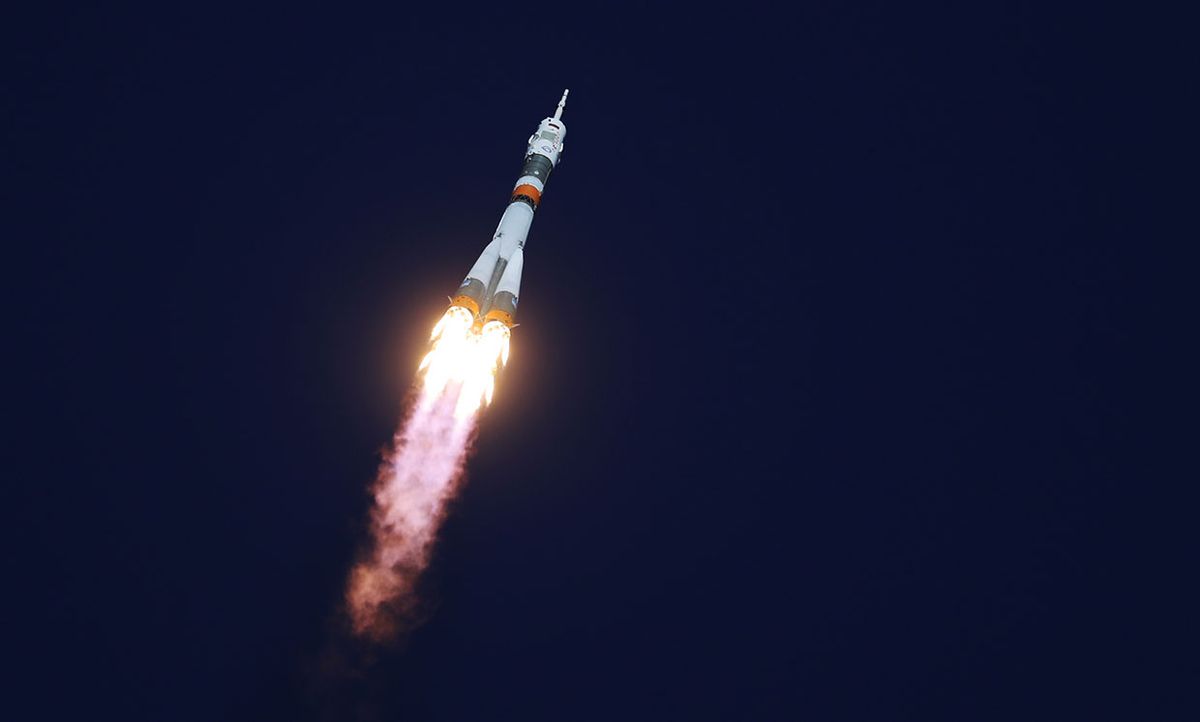This morning's failure of a booster rocket carrying an astronaut and a cosmonaut to the International Space Station was followed by sighs of relief. American Nick Hague and Russian Alexey Ovchinin executed a ballistic abort procedure that subjected them to unusually high acceleration forces, but they landed safely.
The big question is what’s going to happen next. Since the grounding of the space shuttle, Soyuz capsules have been the only spacecraft able to carry people to the space station. Hague and Ovchinin were to join the three-person crew remaining on board as Expedition 57 after three others returned to Earth on 4 October. The three now on the station can operate it safely for the time being, but they were supposed to end their time aboard the vessel on 13 December. Before the mishap, the schedule called for a 20 December Soyuz launch that would have brought three new crew members to the station.
Standard procedure after a launch problem is to delay further flights until the problem can be identified and fixed. “The emergency occurred 119 seconds into the flight, during the separation of the side boosters of the first stage from the central booster of the second stage,” says a Russian space official. The second stage then shut down, forcing the abort. Roscosmos, which operates the Russian space program, announced the formation of a state commission to investigate the failure less than two hours after it occurred.
“The Russian cycle for recovering from launch failures tends to be a lot faster than the U.S. one,” says Jonathan McDowell, a Harvard-Smithsonian astronomer and space-program analyst. But an investigation, no matter how brief, is still likely to delay the planned December launch and the return to Earth of the three astronauts now on board. Because a three-person crew can run the station, they can safely remain there for a few extra months. But being short staffed means they will have limited time for research.
Although other spacecraft, not rated for human flight, can deliver supplies, that doesn’t diminish the urgency of getting a new rocket up there. McDowell says the most important time consideration is the gradual degradation of key components of the Soyuz currently docked on the station, needed to return the present crew to the ground. Its rated lifetime in space is only about 200 days after its arrival at the station, so it should be used by January. Soyuz capsules can dock automatically with the space station, so a crewless replacement could be launched if needed to replace the old one. Such a launch could also be used to test any modifications made to the Soyuz launch system aimed at fixing newly discovered problems.
“The ultimate fallback is that you abandon the station” if the crew currently inhabiting it has to return to the ground before replacements can be dispatched, says McDowell. NASA's Kenny Todd, operations integration manager for the station, told a press conference today that he is “very confident we could fly [the station] without a crew for a while.” But McDowell says the station in its present configuration is not designed to stay in orbit without a crew, so it remains to be seen how long it could remain uninhabited.
That problem might also be an opportunity for NASA’s Commercial Crew Program to come to the rescue. SpaceX and Boeing both have uncrewed flights planned in coming months—SpaceX in January and Boeing in March. Working dates for the first crewed test flights are June 2019 for SpaceX and August 2019 for Boeing, although the earliest long-duration flight is tentatively scheduled for August 2019. NASA has yet to announce a preference between the SpaceX or Boeing system for the first long-duration flight, nor whether the chosen vessel would first go to the station. What’s more, plans for Commercial Crew vehicle launches to the station have assumed that somebody would be there to greet them.
Jeff Hecht writes about lasers, optics, fiber optics, electronics, and communications. Trained in engineering and a life senior member of IEEE, he enjoys figuring out how laser, optical, and electronic systems work and explaining their applications and challenges. At the moment, he’s exploring the challenges of integrating lidars, cameras, and other sensing systems with artificial intelligence in self-driving cars. He has chronicled the histories of laser weapons and fiber-optic communications and written tutorial books on lasers and fiber optics.



